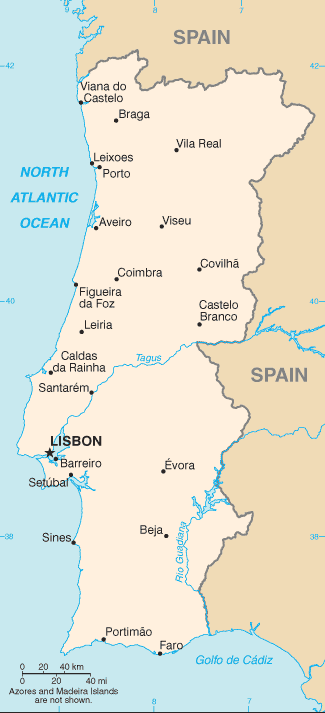|
Alto Trás-os-Montes
Alto Trás-os-Montes (), or ''Nordeste Transmontano'', is a former NUTS-level 3 subregion of the Norte Region of Portugal. It was abolished at the January 2015 NUTS 3 revision. Its 15 municipalities occupied an area of in the north-east of continental Portugal with an estimated 2008 population of 214,460 inhabitants; thus it constituted approximately 40% of the area, but only 6.1% of the population, of the Norte Region. Geography The Trás-os-Montes area refers to a contiguous territory that has similar social and cultural identities, but diverges on the potential economic abilities, while constituting a territorial unit with scale and critical mass to act in concert politically. In addition to its land border with Spain (in the north and north-northeast), it is also juxtapositioned with the subregions of the Douro (to the south), Tâmega Subregion (in the southwest), Ave (in the southwest) and Cávado (in the west). The NUTS III region of Alto Trás-os-Montes includes the foll ... [...More Info...] [...Related Items...] OR: [Wikipedia] [Google] [Baidu] |
Portuguese Language
Portuguese ( or ) is a Western Romance language of the Indo-European language family originating from the Iberian Peninsula of Europe. It is the official language of Angola, Brazil, Cape Verde, Guinea-Bissau, Mozambique, Portugal and São Tomé and Príncipe, and has co-official language status in East Timor, Equatorial Guinea and Macau. Portuguese-speaking people or nations are known as Lusophone (). As the result of expansion during colonial times, a cultural presence of Portuguese speakers is also found around the world. Portuguese is part of the Iberian Romance languages, Ibero-Romance group that evolved from several dialects of Vulgar Latin in the medieval Kingdom of Galicia and the County of Portugal, and has kept some Gallaecian language, Celtic phonology. With approximately 250 million native speakers and 17 million second language speakers, Portuguese has approximately 267 million total speakers. It is usually listed as the List of languages by number of native speaker ... [...More Info...] [...Related Items...] OR: [Wikipedia] [Google] [Baidu] |
West European Time
Western European Time (WET, UTC+00:00) is a time zone covering parts of western Europe and consists of countries using UTC+00:00 (also known as Greenwich Mean Time, abbreviated GMT). It is one of the three standard time zones in the European Union along with Central European Time and Eastern European Time. The following Western European countries and regions use UTC+00:00 in winter months: *Portugal, since 1912 with pauses (except Azores, UTC−01:00) *United Kingdom and Crown Dependencies, since 1847 in England, Scotland, Wales, the Channel Islands, and the Isle of Man, and since 1916 in Northern Ireland, with pauses *Ireland, since 1916, except between 1968 and 1971 *Canary Islands, since 1946 (rest of Spain is CET, UTC+01:00) *Faroe Islands, since 1908 * North Eastern Greenland ( Danmarkshavn and surrounding area) *Iceland, since 1968, without summer time changes All the above countries except Iceland implement daylight saving time in summer (from the last Sunday in March ... [...More Info...] [...Related Items...] OR: [Wikipedia] [Google] [Baidu] |
Ave Subregion
The Comunidade Intermunicipal do Ave () is an administrative division in Portugal. It was created in 2009. It takes its name from the Ave River. The seat of the intermunicipal community is Guimarães. Ave comprises parts of the former districts of Braga and Vila Real. The population in 2011 was 425,411, in an area of 1,451.31 km². Ave is also a NUTS3 subregion of the Norte Region. Since January 2015, the NUTS 3 subregion covers the same area as the intermunicipal community. [...More Info...] [...Related Items...] OR: [Wikipedia] [Google] [Baidu] |
Tâmega Subregion
Tâmega Subregion () is a former NUTS3 subregion, part of the NUTS2 region of Norte Region, Portugal. It was abolished at the January 2015 NUTS 3 revision. Instituto Nacional de Estatística, 18 March 2015 Its name derives from the Tâmega River that crosses through the subregion. With 558,000 inhabitants (2005) it is the fourth most populated subregion in |
Douro Subregion
The Comunidade Intermunicipal do Douro () is an administrative division in Portugal. It replaced the ''Comunidade Urbana do Douro'', created in 2004. It takes its name from the Douro River. The seat of the intermunicipal community is Vila Real. Douro comprises parts of the former districts of Bragança, Guarda, Vila Real and Viseu. The population in 2011 was 205,157, in an area of . Douro is also a NUTS3 subregion of Norte Region. Since January 2015, the NUTS 3 subregion covers the same area as the intermunicipal community. [...More Info...] [...Related Items...] OR: [Wikipedia] [Google] [Baidu] |
Spain
Spain, or the Kingdom of Spain, is a country in Southern Europe, Southern and Western Europe with territories in North Africa. Featuring the Punta de Tarifa, southernmost point of continental Europe, it is the largest country in Southern Europe and the fourth-most populous European Union member state. Spanning across the majority of the Iberian Peninsula, its territory also includes the Canary Islands, in the Eastern Atlantic Ocean, the Balearic Islands, in the Western Mediterranean Sea, and the Autonomous communities of Spain#Autonomous cities, autonomous cities of Ceuta and Melilla, in mainland Africa. Peninsular Spain is bordered to the north by France, Andorra, and the Bay of Biscay; to the east and south by the Mediterranean Sea and Gibraltar; and to the west by Portugal and the Atlantic Ocean. Spain's capital and List of largest cities in Spain, largest city is Madrid, and other major List of metropolitan areas in Spain, urban areas include Barcelona, Valencia, Seville, ... [...More Info...] [...Related Items...] OR: [Wikipedia] [Google] [Baidu] |
Continental Portugal
Continental Portugal (, ) or mainland Portugal comprises the bulk of the Portuguese Republic, namely that part on the Iberian Peninsula and so in continental Europe, having approximately 95% of the total population and 96.6% of the country's land. Mainland Portugal is therefore commonly called by residents of the Portuguese archipelagos of the Azores and Madeira the continent () in all respects including minor elements of combined governance from Lisbon, the country's capital. Before 1975, when the Portuguese territory also stretched to several now-independent states in Africa, the designation ''metropolis'' () was also used. Context The designation ''mainland Portugal'' is used to differentiate the continental territory of Portugal from its insular territory. The latter comprises the archipelagos of Madeira and Azores in the Atlantic Ocean. The Azores and Madeira are also commonly referred to as the autonomous regions (), insular Portugal () or, simply, the islands (). Co ... [...More Info...] [...Related Items...] OR: [Wikipedia] [Google] [Baidu] |
Nomenclature Of Territorial Units For Statistics
Nomenclature of Territorial Units for Statistics or NUTS () is a geocode standard for referencing the administrative divisions of countries for statistical purposes. The standard, adopted in 2003, is developed and regulated by the European Union, and thus only covers the EU member states in detail. The Nomenclature of Territorial Units for Statistics is instrumental in the European Union's Structural Funds and Cohesion Fund delivery mechanisms and for locating the area where goods and services subject to European public procurement legislation are to be delivered. For each EU member country, a hierarchy of three NUTS levels is established by Eurostat in agreement with each member state; the subdivisions in some levels do not necessarily correspond to administrative divisions within the country. A NUTS code begins with a two-letter code referencing the country, as abbreviated in the European Union's Interinstitutional Style Guide. The subdivision of the country is then refe ... [...More Info...] [...Related Items...] OR: [Wikipedia] [Google] [Baidu] |
Portuguese Real
The ''real'' (, meaning "royal", plural: ''réis'' or rchaic''reais'') was the unit of currency of Portugal and the Portuguese Empire from around 1430 until 1911. It replaced the '' dinheiro'' at the rate of 1 real = libras = 70 soldos = 840 dinheiros and was itself replaced by the '' escudo'' (as a result of the Republican revolution of 1910) at a rate of 1 escudo = 1000 réis. The ''escudo'' was further replaced by the euro at a rate of 1 euro = 200.482 ''escudos'' in 2002. History The first ''real'' was introduced by King Fernando I around 1380.Numária nacional Tesouros Numismáticos Portugueses It was a silver coin and had a value of 120 '' dinheiros'' (10 ''soldos'' or ''libra''). In the ... [...More Info...] [...Related Items...] OR: [Wikipedia] [Google] [Baidu] |
Escudo
The escudo ( Portuguese: 'shield') is a unit of currency which is used in Cape Verde, and which has been used by Portugal, Spain and their colonies. The original coin was worth 16 silver . The Cape Verdean escudo is, and the Portuguese escudo was, subdivided into 100 . Its symbol is the , a letter S with two vertical bars superimposed used between the units and the subdivision (for example, ). In Spain and its colonies, the '' escudo'' refers to a gold coin worth sixteen '' reales de plata'' or forty ''reales de vellón''. Currencies named "escudo" Circulating * Cape Verdean escudo Obsolete *Angolan escudo *Chilean escudo * French écu *Mozambican escudo *Portuguese escudo *Portuguese Guinean escudo *Portuguese Indian escudo *Portuguese Timorese escudo *São Tomé and Príncipe escudo *Spanish escudo The escudo was either of two distinct Spanish currency denominations. Gold escudo The first escudo was a gold coin introduced in 1535/1537, with coins denominated in esc ... [...More Info...] [...Related Items...] OR: [Wikipedia] [Google] [Baidu] |
Euro
The euro (currency symbol, symbol: euro sign, €; ISO 4217, currency code: EUR) is the official currency of 20 of the Member state of the European Union, member states of the European Union. This group of states is officially known as the euro area or, more commonly, the eurozone. The euro is divided into 100 1 euro cent coin, euro cents. The currency is also used officially by the institutions of the European Union, by International status and usage of the euro, four European microstates that are not EU members, the British Overseas Territory of Akrotiri and Dhekelia, as well as unilaterally by Montenegro and Kosovo. Outside Europe, a number of special territories of EU members also use the euro as their currency. The euro is used by 350 million people in Europe and additionally, over 200 million people worldwide use currencies pegged to the euro. It is the second-largest reserve currency as well as the second-most traded currency in the world after the United Sta ... [...More Info...] [...Related Items...] OR: [Wikipedia] [Google] [Baidu] |




